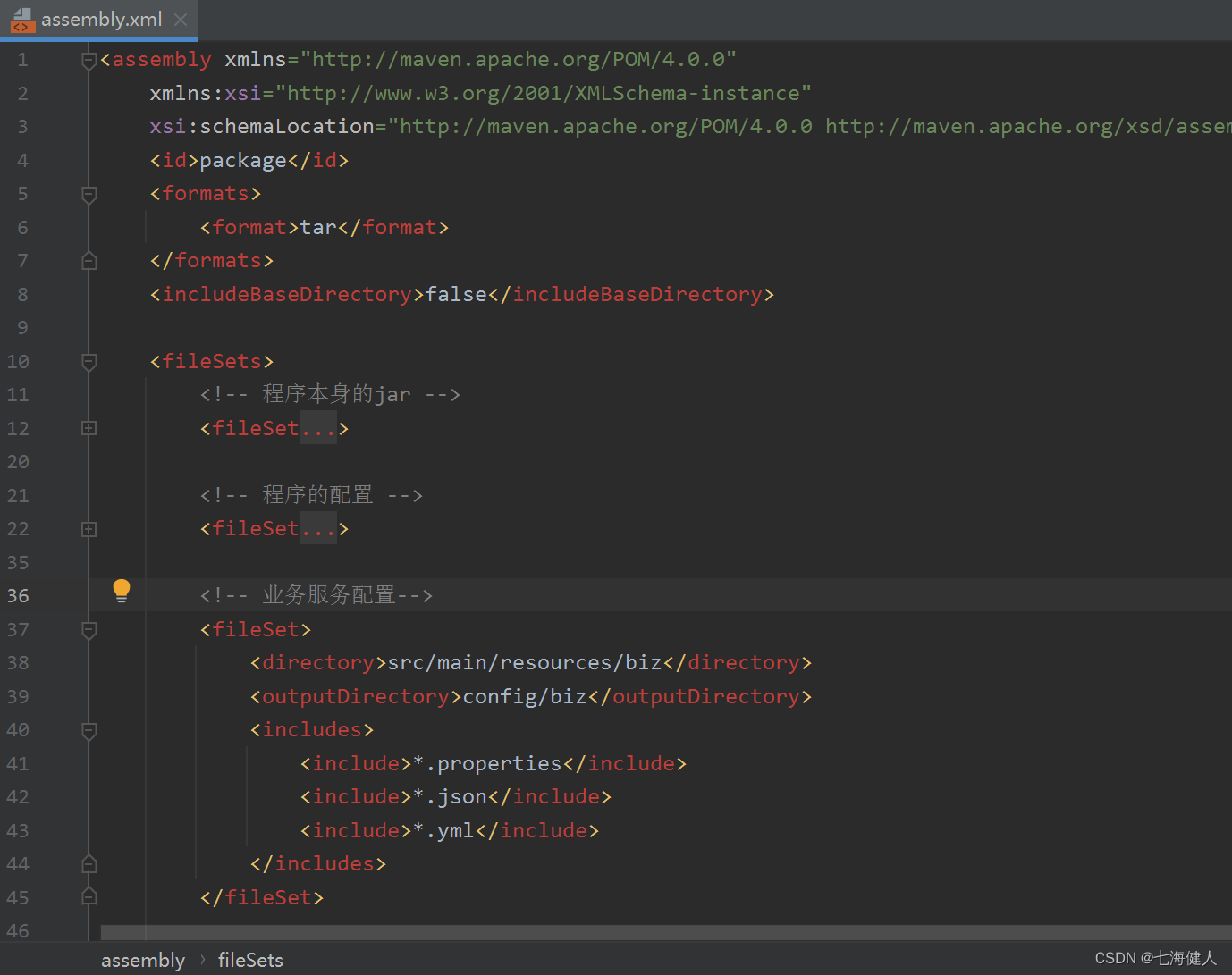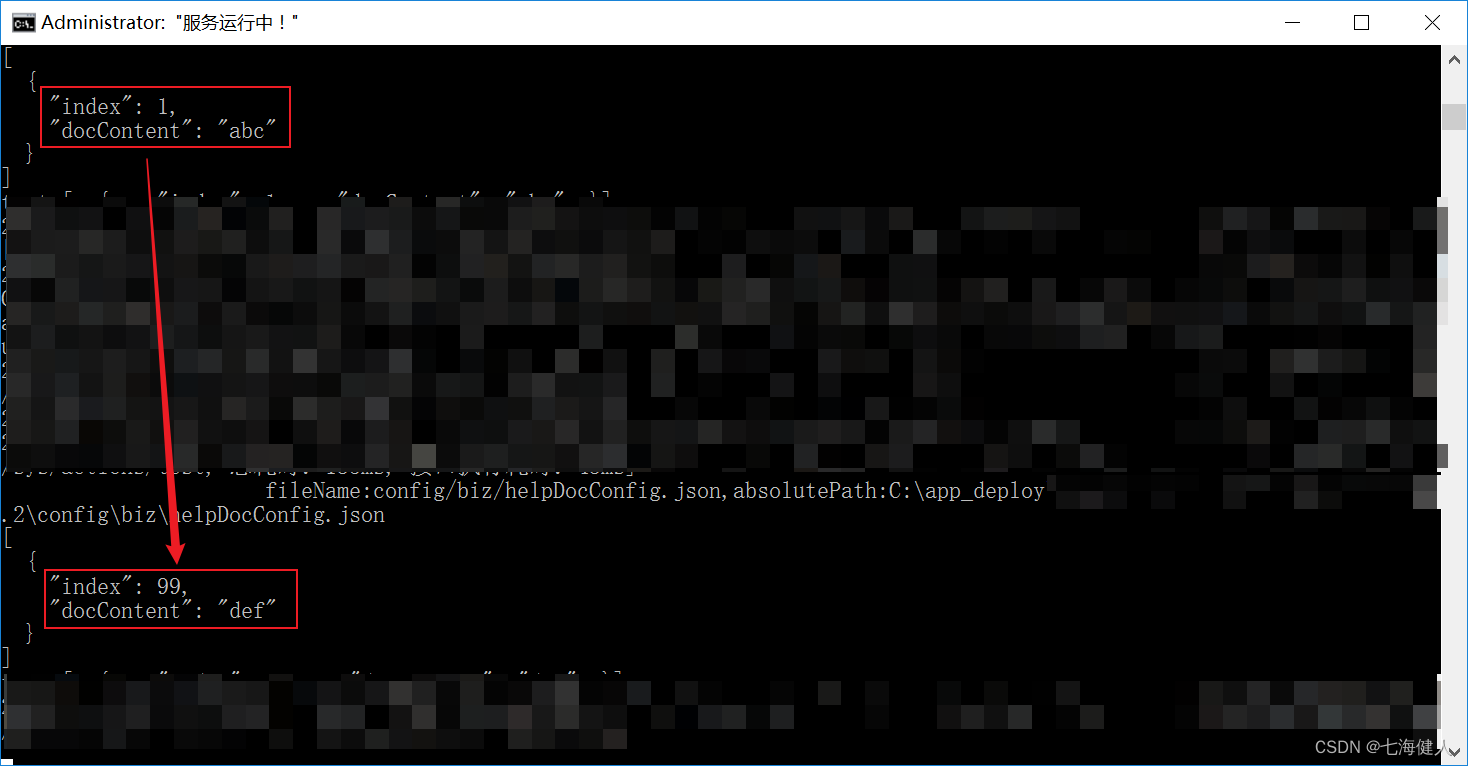1. 背景
基于springboot的工程项目,使用jar方式打包,在打包时将资源文件和配置文件(springboot内置的application.properties/application.yml)单独打出来,方便修改配置而不需要重新编译打jar包;
当然,如果不将配置文件单独打包出来的话,所有的resource目录下的配置文件都会被默认打入jar、包内部,读取路径统一变成:file/:jar包所在目录/xxx-jar.jar!/BOOT-INF/classes!/,如果想修改配置那就只能重新编译打包了;
其实,当下更好的方式是使用配置中心来下发动态配置,如nacos、apollo这类成熟的配置中心中间件,但是本次开发的系统未引入相关的配置中心中间件,采用单机部署,准备快速简单做,所以就准备使用离线的方式来实现配置能实时从配置文件修改;
我们知道,springboot会默认在jar包同目录下的/config或者根目录中找application.yml和application.properties文件(可能是处于安全考虑);
那么怎么让springboot也能读取到我们自定义的配置文件呢?
2. 方案
方案1:把业务配置写入application.yml/application.properties
理论上可以做到修改配置无需重新编译发版,但是这样做也存在缺点——application.yml / application.properties文件只会在springboot启动时加载一次,若修改了业务配置,则需要重启服务,无法实时生效;
方案2:以读取文件的方式来实时加载配置文件
例如:我们在刚开始学习java io的时候写过过读取系统某目录下txt文件的代码,当修改txt文件内容时,java代码中读取到的文件内容是会实时变化的,那么我们现在的问题就是——怎么指定配置文件的路径?
解决:通过查阅资料,很多帖子都没提到重点只是提了下怎么读取文件,没提到重点,最后终于找到了对应的解决方案——使用 FileSystemResource 类加载资源文件;
原因:在使用springboot的插件打成jar包后,此时启动路径与idea中的路径发生变化,资源文件描述发生变化,但是user.dir并没有发生变化;而FileSystemResouce本来就是相对于启动路径来寻找文件的,刚好和我们的需求匹配;
3. 测试
(1)打包时指定将配置文件helpDocConfig.json打到跟jar包平级的config/biz/目录下;

(2)输出的tar包,解压后目录如下


(3)启动jar包,调用测试接口,查看到此时的输出的内容


(4)修改文件,不重启工程,再次调用测试接口,看到此时输出了我们刚修改后的内容,说明使用FileSystemResource实时读取到了离线配置文件;


4. 代码
你们想要的就是这个吧,不废话,上源码;
private void testExternalSrc() {
String fileName = "config/biz/helpDocConfig.json";
// 相对工作目录下面即user.dir
FileSystemResource fileSystemResource = new FileSystemResource(fileName);
File file = fileSystemResource.getFile();
String absolutePath = file.getAbsolutePath();
System.out.println("fileName:" + fileName + ",absolutePath:" + absolutePath);
if (file.exists()) {
StringBuilder sb = new StringBuilder();
try (BufferedReader newBufferedReader = Files.newBufferedReader(file.toPath());) {
String readLine = null;
while ((readLine = newBufferedReader.readLine()) != null) {
sb.append(readLine);
System.out.println(readLine);
}
} catch (IOException e) {
e.printStackTrace();
}
System.out.println("text:" + sb);
}
}这里再附一下普通的读取jar包中的resource目录下配置文件的代码,因为是打jar包,写法跟本地运行存在点差异:
示例(1)
@Slf4j
@Component
public class PropertyUtils {
@Resource
private ResourceLoader resourceLoader;
public Properties getProperty(String fileName) {
try {
InputStream in = resourceLoader.getResource(fileName).getInputStream();
Properties properties = new Properties();
properties.load(in);
in.close();
return properties;
} catch (Exception e) {
log.error("读取文件内容到Properties失败! [fileName={}]", fileName, e);
throw new RuntimeException("读取文件内容到Properties失败! [fileName=" + fileName + "]");
}
}
public String getProperty2String(String fileName) {
try {
InputStream in = resourceLoader.getResource(fileName).getInputStream();
String content = IOUtils.toString(in, StandardCharsets.UTF_8);
in.close();
return content;
} catch (Exception e) {
log.error("读取文件内容到String失败! [fileName={}]", fileName, e);
throw new RuntimeException("读取文件内容到String失败! [fileName=" + fileName + "]");
}
}
}
示例(2)
@Slf4j
public class FileLoaderUtils {
/**
* 读文件文本到String 根目录为resource
*
* @param fileName
* @return
*/
public static String loadFile2String(String fileName) {
ClassLoader loader = Thread.currentThread().getContextClassLoader();
URL url = loader.getResource(fileName);
if (url == null) {
log.error("Cannot_locate_" + fileName + "_as_a_classpath_resource.");
throw new RuntimeException("Cannot_locate_" + fileName + "_as_a_classpath_resource.");
}
try {
return IOUtils.toString(url, StandardCharsets.UTF_8);
} catch (IOException e) {
log.error("读取文件内容为String失败! [fileName={}]", fileName, e);
throw new RuntimeException("读取文件内容为String失败! [fileName=" + fileName + "]");
}
}
/**
* 读文件文本到Property 根目录为resource
*
* @param fileName
* @return
*/
public static Properties loadFile2Property(String fileName) {
ClassLoader loader = Thread.currentThread().getContextClassLoader();
InputStream in = loader.getResourceAsStream(fileName);
Properties properties = new Properties();
try {
properties.load(in);
if (in != null) {
in.close();
}
} catch (Exception e) {
log.error("读取文件内容到Properties失败! [fileName={}]", fileName, e);
throw new RuntimeException("读取文件内容到Properties失败! [fileName=" + fileName + "]");
}
return properties;
}
}补充
由于频繁读取系统文件会占用IO资源,可以将上述代码封装,改为定时刷新+懒加载方式,将离线配置文件的内容刷到本地缓存或Redis中,来减小服务器IO压力;
当然——最好的方案还是使用专业的配置中心中间件来实现配置的实时修改,专业的人干专业的事;
参考:





















 479
479

 被折叠的 条评论
为什么被折叠?
被折叠的 条评论
为什么被折叠?








